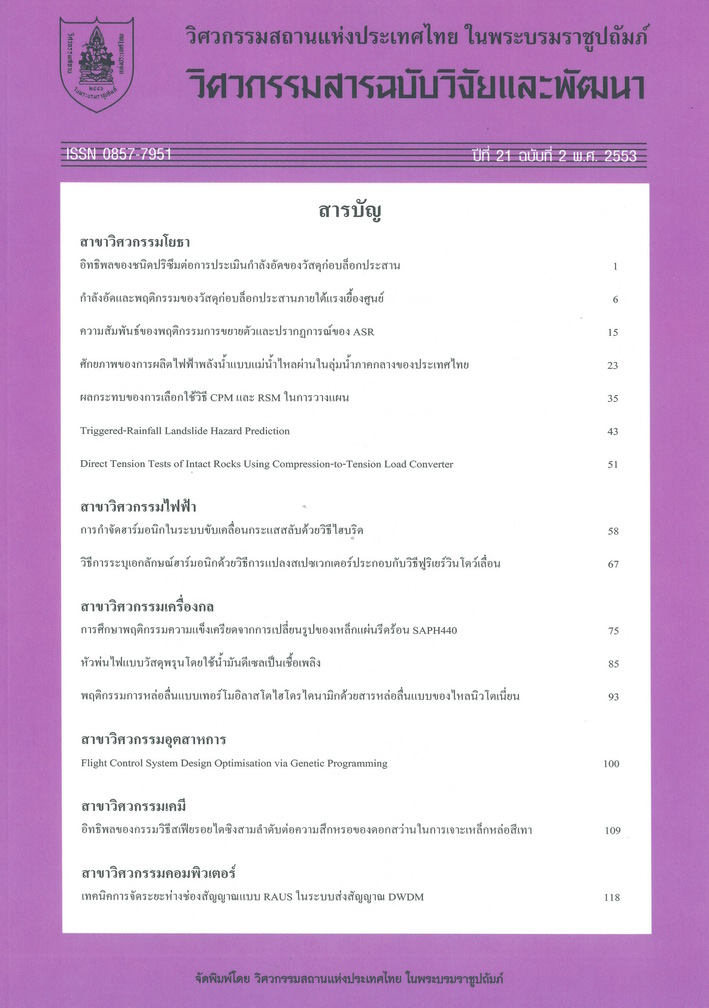หัวพ่นไฟแบบวัสดุพรุนโดยใช้น้ำมันดีเซลเป็นเชื้อเพลิง
Main Article Content
Abstract
The combustion of diesel oil in the porous burner was examined to investigate evaporation mechanism and combustion behavior. The porous medium was made of stainless steel wire-net having 16 meshes per inch. The stainless steel wire-net was cut as circular shape of 96 mm in diameter and was then stacked together to form a porous burner. The porosity (e) and thickness of porous burner were 75 mm and 0.752 respectively. The fuel was supplied dropwise from the top through the porous burner and evaporated in the porous media followed by the combustion on the bottom side. Thus, the present burner differs from the conventional open spray flame burner. Axial profiles of temperature along the burner length were measured to clarify the evaporation and combustion phenomena. The pollutant emission characteristics were also monitored at the burner exit. From the investigation, it was found that evaporation mechanism of diesel oil in porous burner could be achieved owing to the porous burner gained energy from flame radiation. The flame was turbulently stabilized by occurring almost throughout the cross section area of the burner. The temperature profile slightly depended on the effect of flow rate of swirling air (QA), but strongly depended on the effect of fuel load input (QF). The complete combustion was explicitly obtained with increasing QF. The level of CO and NOX were acceptable range. Moreover, a simplification of linear equation for estimating the porosity of stainless steel wire-net assumed to be a function of mesh per inch alone was also proposed.
Article Details
The published articles are copyright of the Engineering Journal of Research and Development, The Engineering Institute of Thailand Under H.M. The King's Patronage (EIT).


